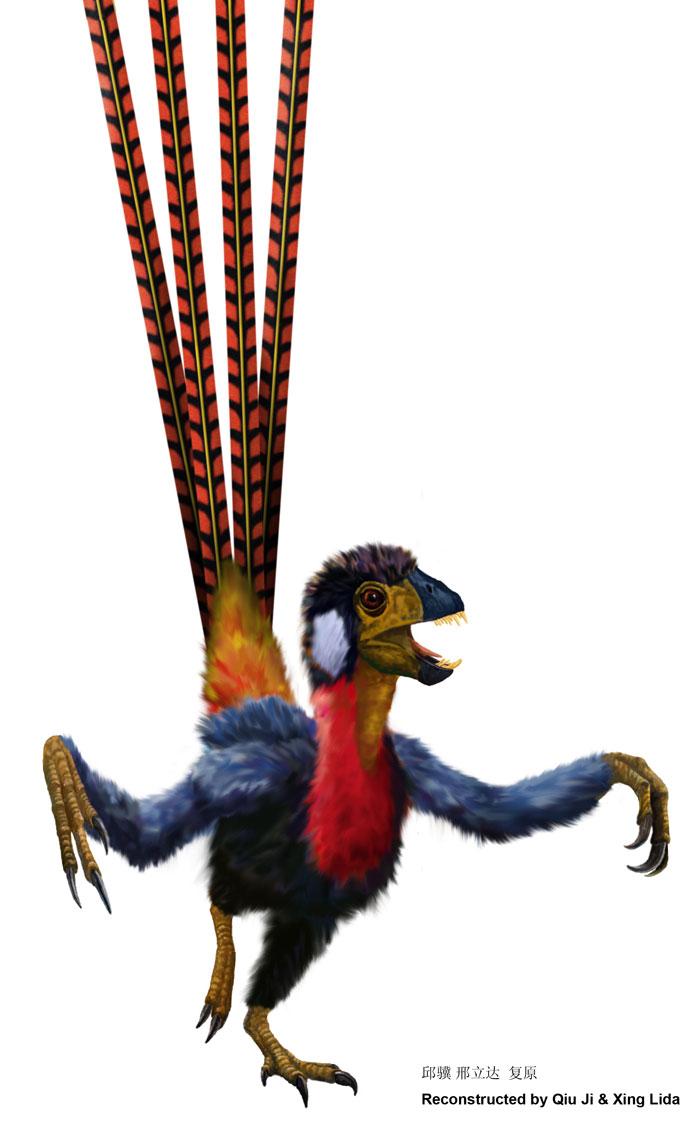| Location: Home > News > Events |
| NewScientist: Half-feathered dinosaur was a bit of a show-off |
|
12:25 23 October 2008 by Jeff Hecht A pigeon-sized, flightless dinosaur that may have lived before Archaeopteryx had a body covered with short downy feathers and four spectacular display feathers on its tail.
The Chinese fossil, named Epidexipteryx (meaning "display feather"), "is very close to the bird lineage," says Fucheng Zhang of the Institute of Vertebrate Palaeontology and Palaeoanthropology in Beijing, China. The creature`s evolutionary relationships to other dinosaurs, its age, and some details of its anatomy remain uncertain. Epidexipteryx might have evolved from flying ancestors, Zhang says, but its age and appearance suggest "that display feathers appeared before airfoil feathers and flight ability". The fossil`s most striking features are four ribbon-like tail feathers stretching at least 20 centimetres - the full length is uncertain as the tips are no longer present. Parallel filaments resembling the barbs in bird feathers run along their length. The shoulders show short fuzzy feathers, which Zhang says also covered the body. But its limbs show no trace of flight feathers. Intermediate stageThe closest known relative of the new find is Epidendrosaurus, the only known specimen of which is a smaller, juvenile dinosaur with a 30-cm bony tail that is about three times its body length. The two came from the same deposits, and are so similar that Tom Holtz of the University of Maryland first thought the new find was a more mature Epidendrosaurus. However, the tail of the new find is much shorter, and Zhonghe Zhou of IVPP calls it "a sub-adult stage of a close relative instead of an adult of Epidendrosaurus". Zhang assigns the two little dinosaurs to a group called Scansoriopterygidae (meaning "climbing wings"), a close cousin of group that includes Archaeopteryx and all later birds. That places it between flying birds and clearly flightless feathered dinosaurs such as the oviraptorosaurs and dromeosaurs. The Epidexipteryx fossil comes from the Daohugou formation in Inner Mongolia, recently dated at 152 to 168 million years, which makes it slightly older than Archaeopteryx. Its age remains controversial, but "time is not critical," says Phil Senter of Fayetteville State University in North Carolina. "It might be a more primitive species that lingered" after Archaeopteryx evolved. Journal reference: Nature(DOI: 10.1038/nature07447) |
